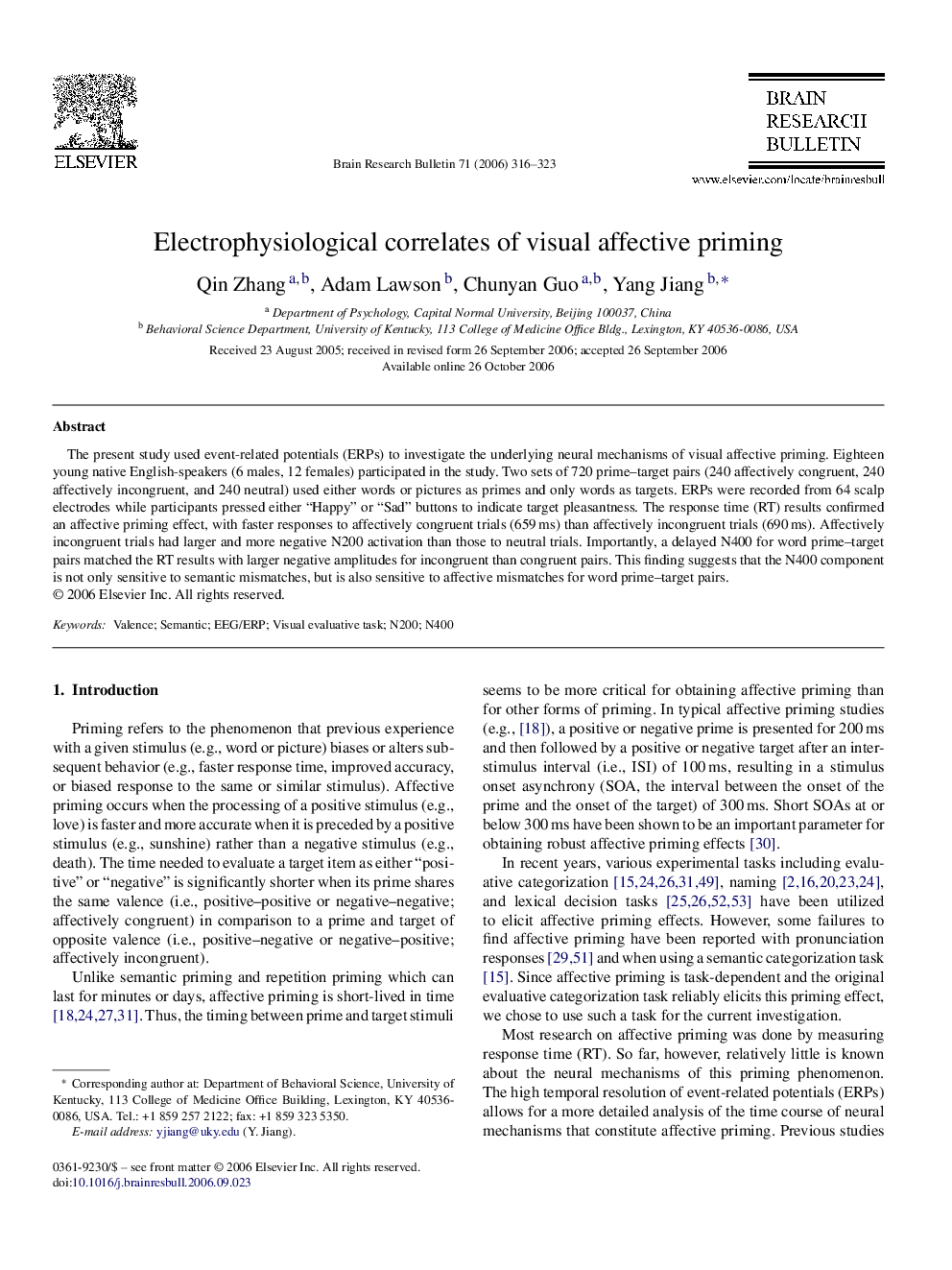| Article ID | Journal | Published Year | Pages | File Type |
|---|---|---|---|---|
| 4320248 | Brain Research Bulletin | 2006 | 8 Pages |
The present study used event-related potentials (ERPs) to investigate the underlying neural mechanisms of visual affective priming. Eighteen young native English-speakers (6 males, 12 females) participated in the study. Two sets of 720 prime–target pairs (240 affectively congruent, 240 affectively incongruent, and 240 neutral) used either words or pictures as primes and only words as targets. ERPs were recorded from 64 scalp electrodes while participants pressed either “Happy” or “Sad” buttons to indicate target pleasantness. The response time (RT) results confirmed an affective priming effect, with faster responses to affectively congruent trials (659 ms) than affectively incongruent trials (690 ms). Affectively incongruent trials had larger and more negative N200 activation than those to neutral trials. Importantly, a delayed N400 for word prime–target pairs matched the RT results with larger negative amplitudes for incongruent than congruent pairs. This finding suggests that the N400 component is not only sensitive to semantic mismatches, but is also sensitive to affective mismatches for word prime–target pairs.
